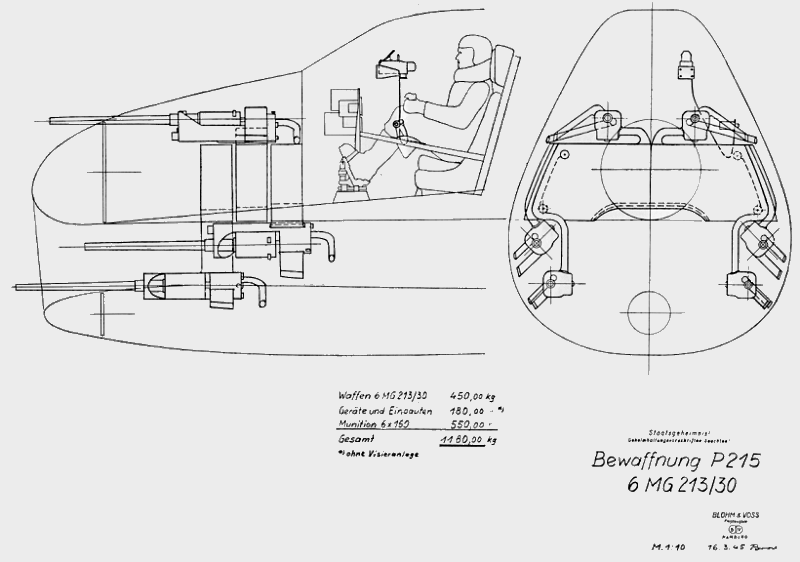Two images of the Rechlin test with the SG 113.
Missed shot on T-34.

Hit on top armor.


Two images of the Rechlin test with the SG 113.
Missed shot on T-34.

Hit on top armor.

SG 113 in FW-190F:

Into the FW 190 twin tubes were built in each case on the right of and left by the trunk into the surfaces. The effect of the weapon was considerable, depending upon hit angle could it one 40 mm strong armoring with 60° and 50 mm with 75° impact angle smoothly pierce and/or strongly distort and promised thus a good success with the fight of armored targets.

To monitoring of the hit results was done via one parallel to the weapon inserted Robot camera with the shot was at the same time released.

Both tubes were installed into a common lining stood out in each case 700mm above and down from the bearing area of the L.G. 190. For forced down landings the SG 113 barrel could be ejected by means of small explosive charges by a simple mechanism below 300 km/h.
Flying path of aproach to target with the SG 113, note the sensors one below each wing.

Is not know if the SG 113 was actually used in combat.
I forgot to mention that in the Hs-129 the six tubes could be fired individually of a full burst of the entire SG 113 barrels.
Reinhmetall SG 116 ‘Zellendusche’
Sonder Gerät 116 ‘Zellendusche’ ( cell shower) was a recoiless 30mm cannon.This equipment was developed, in order to make attacks possible on hostile bomber formations by flying underneath.

The triggering device was operated by means a “photoelectric cell feeler”, a plant working according to kind of the exposure meter, which was released only directly during the target approach before flying underneath the opponent.
Sensor devices were manufactured by the company Opta-Radio. The weapon was built with Rheinmetall Borsig. The SG 116 was built into three different arrangements: four pieces in rhombic form in the trunk, six pieces in double triangle form or 3 pieces in line in the trunk sidewall with a Spreitzung of 2 degrees.The last model of the SG 116 was emplaced in the FW-190. Several testing took place with whe FW-190, He-117 even the lesser Fw 58.

Lenght of individual barrel: 1,65 m
Muzzle speed. 825 m/s.
Hello,
the Förster company still exist today and is still using the metal detecting technic to produce professional metal detectors. Funny that our EOD used that war inventory to find dud bombs and ammo - from wars end until today.
Here is an experimental projectile missing the sabbots from the SG 113. Found some years ago at the Luftwaffen proofing ground Rechlin.
Is that a 30mm ?
No these projectile is about 37mm in diameter - a trial with 75 mm sabots.
Nice they look very much alike the projectiles used in the SG 500 jagdfaust gun.

Dusenkanone Duka 88.

Originally a Kriegsmarine projekt in 75mm the duka 88 was designed as a electric motor actuated, drum magazine type cannon.
The 88 mm tube was feed by a rotating 10 shot magazine, the electric motor rotate the drum 36 degrees after every shot presenting the fresh cartrigde in front the chamber , loading it and closing the breech. The heavy recoil was alleviated in part by means of two nozzles venting the gasses backwards, one in the top and other in lower fuselage.
Data: Caliber of 88 mm, cadence 10 shot/min, mass ~1000 kg and length 4705 mm
oh, good job!
Thanks man, nice to see that somebody actually read this topic.
This is annother puzzling aircraft gun - using a MG 151 15mm barrel and a cartridge ( app. 75mm) that holds 7 projectiles later 9 projectiles of 15mm caliber.
These are of HE/INC type and obviously from the MG 151 ammo, too.
The barrel was closed by a breech screw that chambers the cartridge of 75mm caliber.
When fired the central bullet was driven through the barrel and the gas pressure in the cartridge pressed annother projectile in the central position which was fired instantly.
That was made by a second small gas port behind the projo columne.
To fight the bombers a projectile burst was nessessary and couldt provide with 5 of these barrels under each wing. 10 barrels firing 9 projos ea. in 11/1000 second. That was a burst impossible to produced with normal belt feed weapons- and this HF 15 weapon was very light compared to an machine cannon. Sonderwaffe HF 15 means Special purpose weapon - HF (hohe Feuerfolge) very high cadence - 15 is the 15mm caliber.
These weapon needs an special powder positioning to create a saw teath like powder pressure. The first projo reach 1000m/s and the last about 800 m/s muzzle velocity. The weapon was fully developed and a small number where produced. The hole project was very secret and nothing is known about combat use. Even today the sources are scarce.
Here is an english and an russian document of the ammo.
I recall reading that the USA was interested in the HF 15 after the war and even made some ammunition for it to continue testing.
Nice drawing GK, crazy, I never read something about like that in the past :shock:
It is funny to see that the USA only offeres simplified or scetch like drawings.
The russians forget to mentioned that the 15mm projo had two driving bands- may be they captured early stages of the ammo and gun.
The russian drawing show the new air columne fuze. These fuze need no mechanical parts- the compressed air in the central hole fired the detonator.
I add an scetch of the weapons under the wing of a FW 190 - these 5 barrels weight about 100 kg.
To that Ive found a HASAG drawing showing more details from September 1944. Note the two driving bands, the positioning of the propellant and the elctrical primer screw.
That would gave a impressive but short burst 
Duka 88 (II)
Now I am posting the aditional images refering to the Duka 88 gun, again thanks to GK for this beautiful drawings.

The semi-self combustible cartrigde.

Images of the motorizated loading mechanism and gas escape nozzles.
Mauser MG 213, revolver gun.

In late 1942 the german RLM ( Reichs air ministry) came out with a very surprising requeriment.
This was one for a 20 mm gun with a rate of fire of 1000 rpm, and with a muzzle speed no less than 1000 meters per second.
This was nearly a shock for the german designers, although there was guns capable to reach and surpass the 1000 rpm rof those were small calibre machineguns and the cannons with high muzzle velocity like the 2 cm Flak 30/38 were completely unable to reach the requested rate of fire.
The requeriment was deliver to Krieghoff and Mauser. HASAG was in charge to develop the ammunition.
Krieghoff designed a experimental weapon using the gas operation, that was MG 301.
Mauser in the other hand understood that the standar gas or recoil systems were not useful in this very high rate of fire weapon, and they used the revolver gun instead.
The revolver gun was not actually a new idea, there was experiments with this type of mechanism since the XVIII century, however the Mauser technicians were the first to achieve a superb aircraft weapon.



Was there any mention of barrel life? looks like it could go through them fairly rapidly.
Yes, it would have done. But that wasn’t a major concern with aircraft guns, partly because if the planes got back to base they could easily be given new barrels, and if they didn’t, well…
I suppose it also depends on the lenght of the burst used by the pilot, needless to say the MG 213 did not saw service in ww2 because it arrived too late for the conflict.
